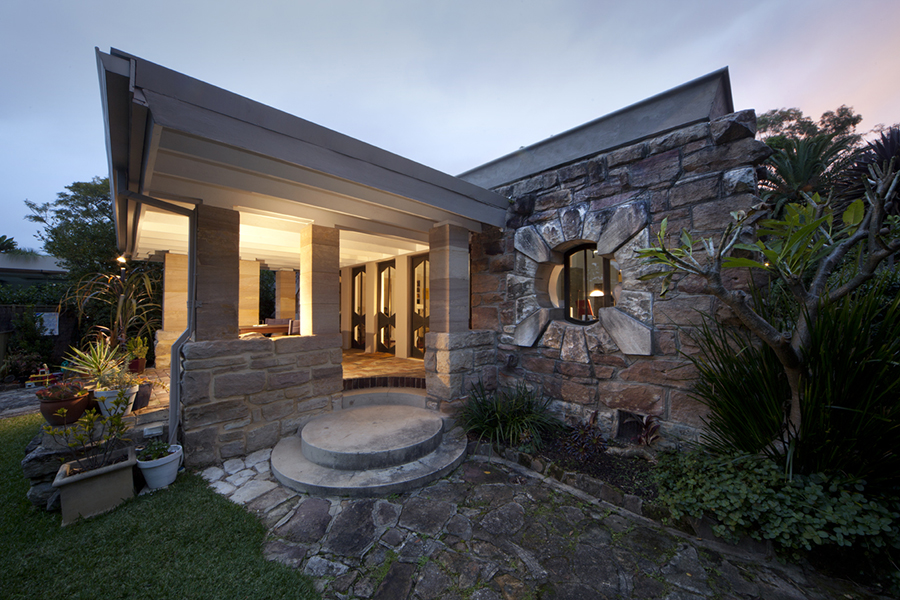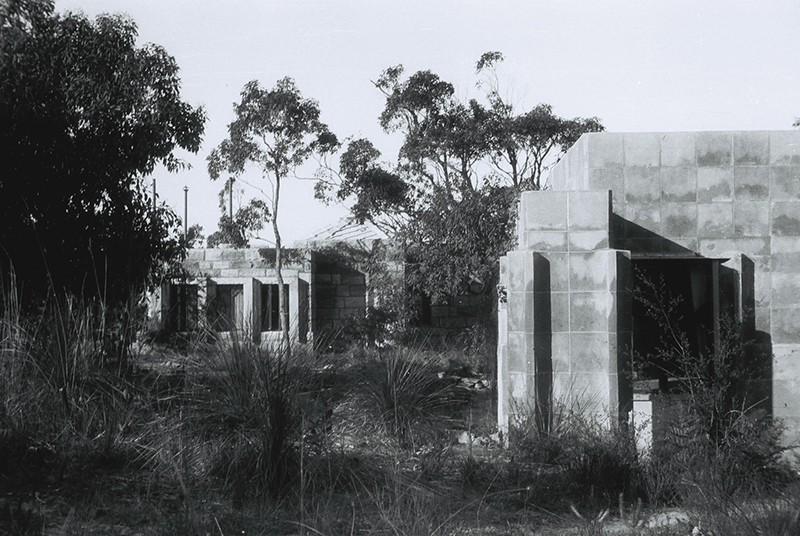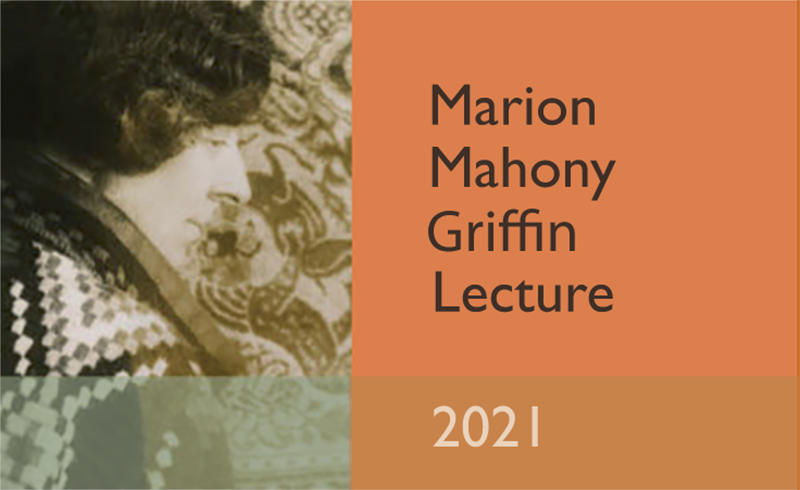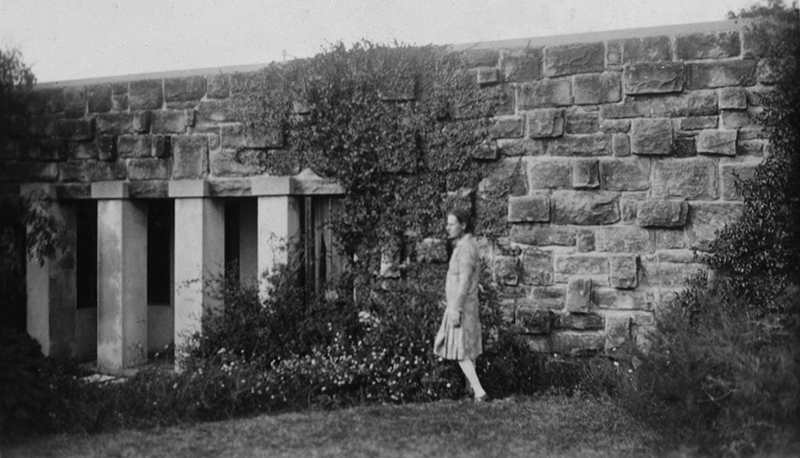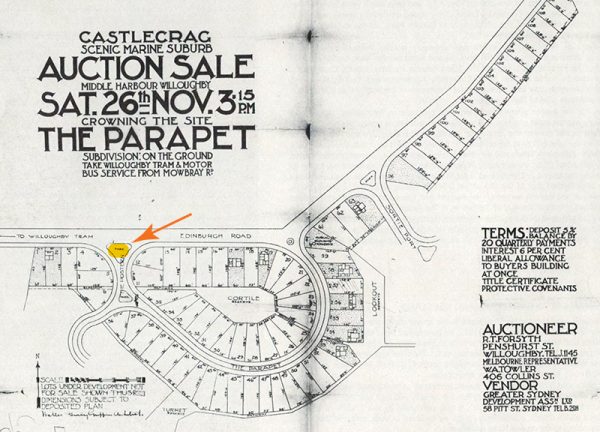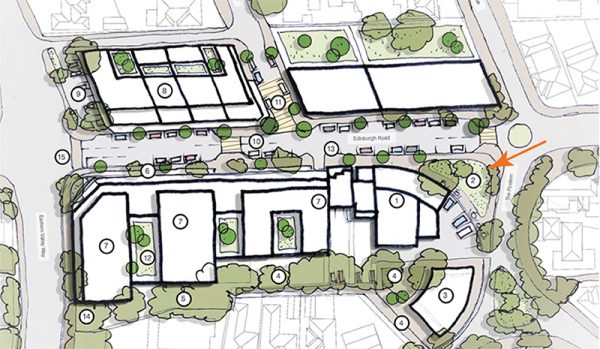Griffin Open Houses at Castlecrag – Sunday 2 May 2021
Celebrate the centenary of the Griffins’ Castlecrag and immerse yourself in its unique heritage. This is a rare opportunity to see the interiors, special design features and gardens of some of the Griffin designed houses built in the 1920s and early 30s in their “ideal suburb” that they created at Castlecrag.
There are tickets to visit 4 houses or 2 houses. Covid safe rules will apply. Tickets are essential and strictly limited. Book at www.trybooking.com/BOQLQ
All profits from the open house day will go towards funding an exciting contemporary sculpture to honour Marion Mahony Griffin (1871–1961) in her sesquicentenary, by a prominent artist that the Walter Burley Griffin Society is commissioning. The sculpture will take pride of place in a new community park, being created by Willoughby City Council at Castlecrag village, which is planned to be opened in late 2021.
Outdoor Historic Photo Exhibition guided tours – 2 to 9 May 2021
Join us for a guided tour through some of the walkways and reserves of this unique suburb designed by Walter Burley Griffin and Marion Mahony Griffin. Displayed along the route will be historic photos from the 1920s to 1960s. Supported by a Willoughby City Council grant. The photo exhibition, displayed on various nature strips, is free.
For the guided tours of the exhibition, tickets are essential at www.trybooking.com/BOYTJ
MMG Lecture 2021 – 14 February 2021 at 11.00am
Museum of Sydney, Bridge Street, Sydney
To celebrate Marion Mahony’s sesquicentenary and the centenary of the Griffins’ Castlecrag, guest speaker Dr Anne Watson will give a talk titled
‘What made Marion’s Hair Stand on End?’ An exploration of Marion Mahony Griffin’s pioneering role as an environmentalist and urban planning advocate in Australia through her art, architecture and writing.
Tickets $30 and include FREE entry to the museum and Paradise on Earth exhibition. Tickets for members $20 and students $5. Bookings essential as seats at half capacity for covid social distancing. Book online at:
https://www.trybooking.com/BNFTF
Speaker Dr Anne Watson is curator of Paradise on Earth (Museum of Sydney, November 2020-April 2021) celebrating the sesquicentenary of Marion Mahony Griffin’s birth. Dr Watson has had a long association with the Griffins including as curator/editor of the 1998 Powerhouse Museum exhibition/catalogue Beyond Architecture: Marion Mahony and Walter Burley Griffin in America, Australia and India, editor of Visionaries in Suburbia: Griffin Houses in the Sydney Landscape (2015). She has also written and lectured extensively on the history of the Sydney Opera House including as author of The Poisoned Chalice: Peter Hall and the Sydney Opera House (2017) based on her 2014 PhD thesis.
Griffin Open Houses at Castlecrag Sunday 2 May 2021
Celebrate the centenary of the Griffins’ Castlecrag and immerse yourself in its unique heritage. This is a rare opportunity to see the interiors, special design features and gardens of some of the Griffin designed houses built in the 1920s and early 30s in their “ideal suburb” that they created at Castlecrag.
There will be tickets to visit 4 houses or 2 houses. Tickets are strictly limited and will go on sale in March. Covid safe rules will apply.
All profits from the open house day will go towards funding an exciting contemporary sculpture to honour Marion Mahony Griffin (1871–1961) in her sesquicentenary, by a prominent artist that the Walter Burley Griffin Society is commissioning. The sculpture will take pride of place in a new community park being created by Willoughby City Council at Castlecrag village which is planned to be opened in late 2021.
Author
The Society is indebted to Anne Watson, editor of Beyond Architecture: Marion Mahony and Walter Burley Griffin in America, Australia and India. Sydney, Powerhouse Publishing, 1998, and to research by Peter Navaretti, Dr Jeff Turnbull and Robert F McKillop.
Further reading
The Society is indebted to Anne Watson, editor of Beyond Architecture: Marion Mahony and Walter Burley Griffin in America, Australia and India. Sydney, Powerhouse Publishing, 1998, and to research by Peter Navaretti, Dr Jeff Turnbull and Robert F McKillop.
Open House Melbourne 2020 virtual tours of two Griffin buildings
Open House Melbourne 2020 is featuring a virtual tour and Q&A of the famous Capitol Theatre on Saturday 25 July 2020 at 11am. Register for this free event at: https://www.openhousemelbourne.org/melbourne/buildings/the-capitol-rmit-university/
Enjoy the theatre’s magnificent interior and its spectacular illuminated crystalline ceiling. Renowned Australian architect Robin Boyd described The Capitol as “the best cinema that was ever built or is ever likely to be built”.
Open House Melbourne 2020 is also promising to provide a virtual tour of Griffin’s Salter House, Toorak. The house was built in the mid 1920s, and is built of knitlock, the segmental concrete building system designed by Walter Burley Griffin and engineer David Jenkins, that was patented in 1917. More information about the house and possible tour at https://www.openhousemelbourne.org/building/the-former-salter-house/
22/7/2020
Lake Burley Griffin’s West Basin threatened by poor planning proposal
The planning intentions of Canberra’s ACT City Renewal Authority for land reclamation and boardwalk development at Lake Burley Griffin’s West Basin are unsympathetic to the Griffin vision and are the first stage of proposed massive apartment developments.
In May 2020 the Walter Burley Griffin Society made submissions on this development works proposal highlighting the failings of the proposal and requesting further public consultation on unresolved issues of scale and accessibility that need to be revealed and discussed.
Background
In 1992 the National Capital Planning Authority (NCA) and the ACT Planning Authority jointly issued a Draft Discussion Document on Acton Peninsula & West Basin – Where the City Meets the Lake and conducted wide public consultations on ideas for urban development of the precinct. In 2007, arising from their Griffin Legacy project, the National Capital Authority secured Amendment 61 to the National Capital Plan to enable intensive mixed-use urban development of West Basin.
The ACT City Renewal Authority (CRA) plans for West Basin are not settled but include multiple land uses, 5,000 residents, 2,000 dwellings and 5,400 jobs by 2046 (2,600 residents and 4,000 jobs by 2031). West Basin remains a Designated Area of National Significance and thus subject to NCA Works Approval.
The NCA issued a Draft Structure Plan in May 2017 for development of the adjoining Acton Peninsula Precinct, to the south, for ‘culture, education and recreation’. The neighbour on the westerly side of West Basin, the ANU, issued in August 2019 their ANU Campus Master Plan 2030. To the north on elevated Territory Land is the high density, high rise and successful New Acton Precinct.
In March 2020 it was announced that the ACT Government had obtained ownership of 2.8 ha of West Basin to be reclaimed from Lake Burley Griffin in exchange for 32 ha of highly valuable land in the suburb of Curtin for a diplomatic estate. Shortly after, the City Renewal Authority (CRA) applied for NCA Works Approval for Stage 2 (Stage 1 is a completed picnic ground at the eastern end): reclaim the lake waters, build a 500m by 8m wide Boardwalk and preliminary land clearing; applications for stormwater and infrastructure were foreshadowed.
Public comments closed 22 May 2020. Former President of the Society Professor James Weirick and the Canberra Chapter have since 2006 made submissions criticising the nature of this development with reference to Griffin’s design vision and principles. The National Capital Plan still enshrines many elements of Griffin’s 1918 Plan. The Society’s submissions made in May 2020, and a growing chorus of community opposition, argue that the Works Application fails to meet the National Capital Plan statutory criteria.
The ANU and Acton Peninsula Plans are less advanced but raise particular concerns about Griffin’s Water Axis and the balance of building and landscape designs.
The CRA proponents typically enlist Griffin’s intentions as supporting the West Basin development. Griffin did not ever propose urban development on the West Basin waterfront. He placed great emphasis on urban open space and extensive parklands in this location. He was committed to continuous public access to the foreshore and planned outdoors recreation, landscape vistas and settings, a hospital on the southern foreshore, an amphitheatre, cultural institutions, public structures and amenities evolving with the functional and symbolic purposes of the national capital.
Griffin intended the geometry of his Water Axis and crossing with the Land Axis to guide the consistent alignment of public buildings in the Central National Area, including the university campus, complementing and defining the landscape.
What is needed
Canberra and the Griffin vision deserves much better than what is being proposed by the ACT’s City Renewal Authority.
More inspiration about the great potential of this wonderful site, a central element in Griffin’s vision and Plan for Canberra is necessary. The planning intentions announced under City to the Lake for mixed land uses in West Basin do not appear to be on a scale balanced with the natural and design environments. Above all, the works application fails to offer a unique and special place for the Acton Waterfront Redevelopment.
You can make a representation about this to David Smith MP, the ACT representative of the Parliamentary Joint Standing Committee on the National Capital and External Territories david.smith.mp@aph.gov.au
23 June 2020
2021 – Centenary of the Griffins’ Castlecrag and Sesquicentenary of Marion Mahony Griffin’s birth
The year 2021 will mark the centenary of Castlecrag and the 150th anniversary of Marion Mahony Griffin’s birth.
To mark that big year:
• the Museum of Sydney will have an exhibition about the Griffins and Castlecrag.
The Walter Burley Griffin Society will organise
- Griffin Houses Open Day
- Exhibition of Max Dupain photographs
- Marion Mahony Griffin Lecture
- School art project
- Sculpture to honour Marion Mahony Griffin
In addition, we are seeking the creation of a small park as detailed in Willoughby City Council’s Local Centre Strategy adopted in December 2019 (see Indicative Masterplan below right), which would be a most fitting celebration of the centenary of the Griffins’ Castlecrag. At present the location is a carpark for 8 cars and is an unattractive expanse of bitumen outside the historic 1925 Griffin Centre at the corner of Edinburgh Road and The Postern, Castlecrag.
Until the 1960s it was a large road island park and road reserve as designed by Walter Burley Griffin (see plan at right). A park would enhance the village atmosphere of Castlecrag and celebrate the Griffins’ passion for the natural landscape. The Society is working to advance support and funding for the park and hopes that the sculpture it commissions, to honour Marion Mahony Griffin, can be located there, and that the park can be named the Marion Mahony Griffin Park.
29 April 2020
Marion Mahony Griffin outside the Grant house, Castlecrag where she and Walter lived from 1925 to 1935. Photographed by Dr Jorma Pohjanpalo, c 1930. Eric Milton Nicholls Collection, National Library of Australia. nla.pic-vn5758135.
Detail from Griffin’s Castlecrag plan for the first auction on 26 November 1921 showing the park that existed until 1960s at corner of The Postern and Edinburgh Road.
Indicative masterplan published in Willoughby City Council’s Final Local Centre Strategy 2019 with proposed community park shown at the corner of The Postern, Castlecrag.
NSW fast-tracks previously refused developments, April 2020
The NSW Government has recently introduced changes to the EPA Act (clauses 10.17 and 10.18) and introduced the Planning System Acceleration Program (Media Release dated 3 April 2020) to fast track rezonings and development applications, justifying this by the need to stimulate the State’s economic recovery during the COVID-19 crisis.
It will enable the NSW Minister for Planning to approve DAs previously refused by local councils and/or Local or Regional Planning Panels. An example of such inappropriate development, that has been given the green light, is at 41 McLaren Street North Sydney which has a height control set in the recently updated NSLEP at maximum 100 metres, but the Planning Proposal is for a 226 metres high residential tower, more than twice the height, which would cast a huge shadow over much of North Sydney CBD Council to the south of this development.
The metropolitan and regional Councils’ strategic plans have been developed in consultation with local communities and all major stakeholders and identify the need for significant growth in housing and employment and important local priorities. They should not be ignored and over-ruled by the Minister. It is not in NSW’s best interests to give the green light to these inappropriate proposals that will almost inevitably have detrimental impacts on the heritage, environments and social fabric of Sydney and NSW in the long term. Such an opaque approach is fraught with risks.
As Elizabeth Farrelly pointed out in her Sydney Morning Herald article of 25 April 2020 “The government says fast-track planning processes will keep people in jobs and the construction industry moving throughout the COVID-19 crisis. If that were the priority, though, you might expect similar support for the arts sector which generates $16.4 billion to NSW GDP and employs 118,000 FTE [Full Time Equivalent] workers.
The Society has written to the NSW Minister for Planning and the Treasurer requesting that the Government revise its recent legislation and program to ensure transparency and quality planning outcomes that are not detrimental to NSW and future generations.
28 April 2020

